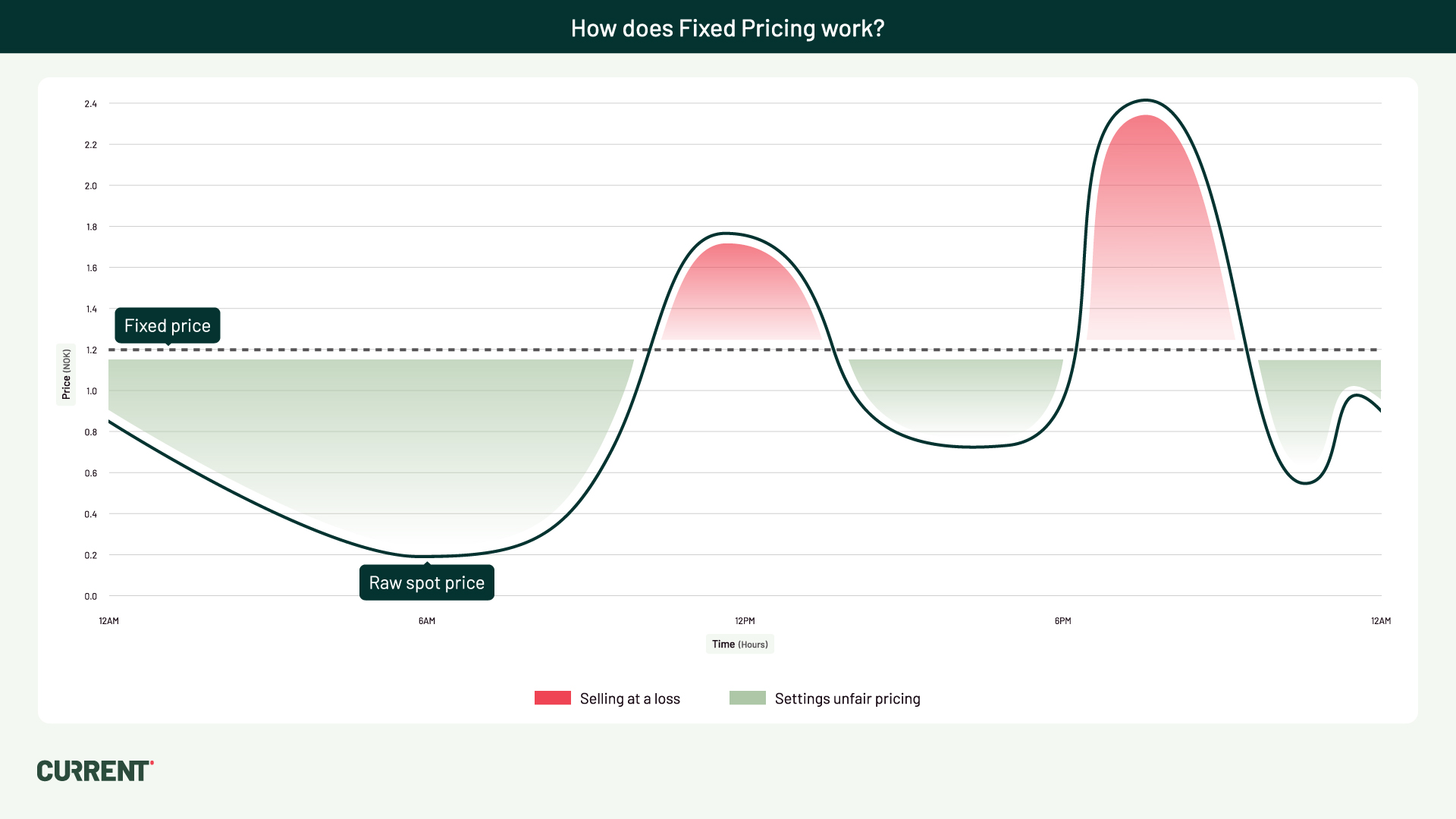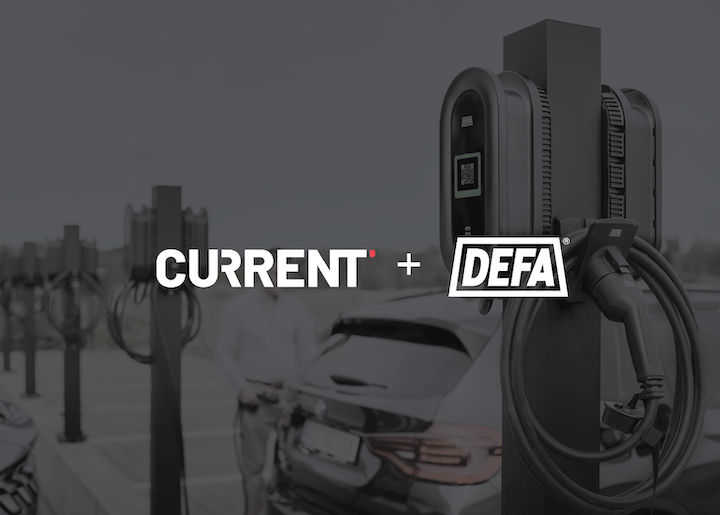.jpg)
Unstable electricity prices can ruin the experience and sleep of both charging station administrators and users. While the old fixed-price-per-kWh setup has been popular, it only works when electricity prices are predictable and stable. When prices fluctuate dramatically, there is a need for a more flexible solution.

We want to introduce you to CURRENT's spot price, which ensures that profits cover electricity costs at all times while providing consumers with a predictable price based on reliable forecasts. With CURRENT's spot price, you can be confident that you are paying exactly what you expect while taking advantage of the benefits of dynamic pricing.
When using CURRENT's spot prices, you will never have to worry about paying too much when electricity prices are low or too little when electricity prices are high. This provides a more fair marketplace and ensures that the price is always correct according to market prices. With Current's spot prices, you get a safe and reliable way to manage dynamic prices, and you can be sure that you are paying exactly what you should.
The spot price function of CURRENT gives owners and operators of charging stations the ability to set prices that follow the hourly electricity prices, with a customized margin. The result is that drivers will always get a fair and competitive price for their charging, while owners and operators can be confident that they will make money from their charging stations.
Who benefits from this?
Simply put everyone! With CURRENT's spot price function, you can easily customize your prices to the market while offering an affordable charging experience for your customers.
Everyone shares in the benefits:
- Operators of public charging points who sell electricity.
- Housing cooperatives who want to ensure their residents pay a fair and accurate price.
- Companies sponsoring charging points who want to reward their employees or partners in a fair way.
- Private electric car drivers who share their charging points with the public.
Charging point operators
With CURRENT's spot price function, operators of public charging stations can be confident that they will cover the basic electricity costs regardless of fluctuating prices. By adjusting their prices in real-time based on market prices, operators of public charging stations can offer competitive prices that will always cover the costs of electricity. With CURRENT's spot price function, operators of public charging stations no longer need to worry about unstable electricity prices and can instead focus on providing a reliable and cost-effective charging experience for their customers.
Users
Electric car drivers want predictable and fair charging prices, but fluctuating energy prices have made it difficult for charging point operators to offer stable prices. As a result, drivers can experience paying unreasonably high prices to charge their cars, leading to frustration and a loss of trust in the electric vehicle charging ecosystem. This can in turn harm businesses and hinder the industry as a whole. By using a pricing model directly tied to real-time electricity prices, charging point operators can offer predictable prices for electric car drivers regardless of energy price fluctuations. This gives drivers a clear overview of expected charging prices and ensures that they never pay unreasonably high prices for charging. Such a pricing model will help strengthen trust, transparency, and fairness in the electric vehicle charging ecosystem and support the growth of the industry as a whole.
Corporate charging
Owners of workplace charging points, such as companies offering charging to their employees or covering their home charging, can now link their charging prices to the actual costs and pay out to employees without subjecting them to taxable situations. Previously, employees could be paid too little, and the company would later have to pay compensation, creating a lot of administrative work and frustration. If employees were paid too much, the excess had to be reported as taxable income. With the new pricing model, companies can be sure they are covering the costs of charging their employees, without creating accounting or tax problems for the employees.
Housing cooperatives
With a few simple keystrokes, the housing cooperative can now distribute all costs, both fixed and variable, to electric vehicle drivers. This ensures a fair and understandable price for charging, without the rest of the housing cooperative being affected by the costs of the charging facility. With CURRENT, they no longer have to worry about high operating costs or losses on the investment, and electric vehicle drivers can enjoy a hassle-free charging experience.
What is spot pricing?
"Spot price" simply means the current price of a commodity, in this case, electricity, at a specific time and place in the market.
With CURRENT's spot price function, operators can set a kWh price based on the updated hourly price they pay for electricity, instead of using a static price that may not reflect the actual price. The operator or owner can then add the necessary premium to be in line with their energy contract or income goals.
CURRENT uses the location of the charging point to determine which price group to use for the spot price. Price groups may vary slightly from region to region in the country. Operators can then use simple calculations to define the price in different ways:
Charging price = spot price + markup (fixed) AND/OR (percentage) + and/or transaction fee
Spot price rate = the spot price for the area/location of the charging point on an hourly basis based on data from Nord Pool
Markup (fixed) = the ability to add a fixed premium on top, e.g. delivery costs
Markup (percentage) = the ability to add a percentage markup of the spot price on top (e.g. VAT)
Transaction fee = the cost of transmitting and executing the payment order
For example, let's say a charging session starts at 10:30 and ends at 11:30. When a customer charges 7.2 kW evenly, this will give a total charging price of 53.85 kroner, where the location owner would be left with 1.5 ore after covering all their costs.
What does this actually mean for both operators and users?
This means that in the future, operators can charge users based on the spot price and profit margin they have chosen - either fixed or percentage, or both. Users will pay the real-time price for electricity and then the profit margin the operator has chosen. This will make the transaction between supplier and consumer more fair and transparent.
Dynamic pricing based on spot prices is not just an advantage, it is a necessity! Contact us if you wish to access spot prices for your charging point business!



